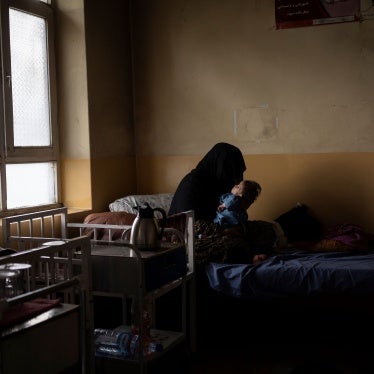BOMBAY If the international conference on AIDS in Barcelona this week wants to see how a country can spread AIDS from "high-risk groups" into the general population, it should look at the recipe in India.
The first ingredient: Be sure that sex workers, drug users and men who have sex with men are stigmatized and forced to live in the margins of society. Denying their existence also helps.
Second, and this is key: Be sure that those who are brave enough to work with these populations to prevent AIDS are also stigmatized, abused and beaten by the police, thrown in jail on trumped-up charges and accused of being enemies of the state.
A third ingredient is optional: Lie about the number of infected people to make it look as though everything is well under control. The Indian government says there are 4 million persons with HIV/AIDS in India, a figure that most experts think is grossly understated. Since the national AIDS program refuses to provide anti-retroviral treatment, prevention is the only hope for the millions at risk of infection.
Partly because India is following the how-to-spread AIDS recipe to the letter, it is now home to one of the worst epidemics in the world. The organizations there that are fighting AIDS on the front lines among sex workers and sexual minorities face frequent and violent harassment from the police. The public health service of the government provides these groups with condoms and in some cases money - and then sits back as their work is undermined by police officers who abuse AIDS workers with impunity. Take the case of the aptly named collective of women in prostitution, VAMP, in Nippani near the Maharashtra-Karnataka border. This collective's work is internationally recognized for empowering sex workers to secure condom use by their clients and for AIDS prevention work. It distributes 350,000 condoms per month. The group was broken up by local officials who violently ran its workers out of town.
Or take the AIDS educators associated with the Samraksha organization in Bangalore. The police have beaten them, taken their condoms away, accused them of drug offenses for which there was no evidence, and, in one hideous incident, rubbed chili into their eyes and vaginas. Or the groups in several states conducting AIDS prevention work with men who have sex with men, whose workers have been rounded up, sexually abused by police in detention and accused of undermining Indian culture.
An antiquated, colonial-era sodomy law, Section 377 of the Indian Penal Code, is cited as justification by police as they arrest HIV/AIDS educators who work with men who have sex with men. The Delhi High Court is considering a petititon by Naz Foundation India Trust to repeal this law.
The World Bank is the main funder of the national AIDS program, having lent India more than $300 million for the effort so far. The terms of the loan include ensuring respect for the rights of persons at high risk of HIV transmission, but the bank has done little to ensure that this provision is enforced. It is time for the government to make protection of the rights of high-risk persons and those who provide AIDS prevention services to them a centerpiece of its AIDS program. Repealing Section 377 would be a good start.
*The writer, Joanne Csete, who directs Human Rights Watch's HIV/AIDS and Human Rights program, contributed this comment to the International Herald Tribune.








